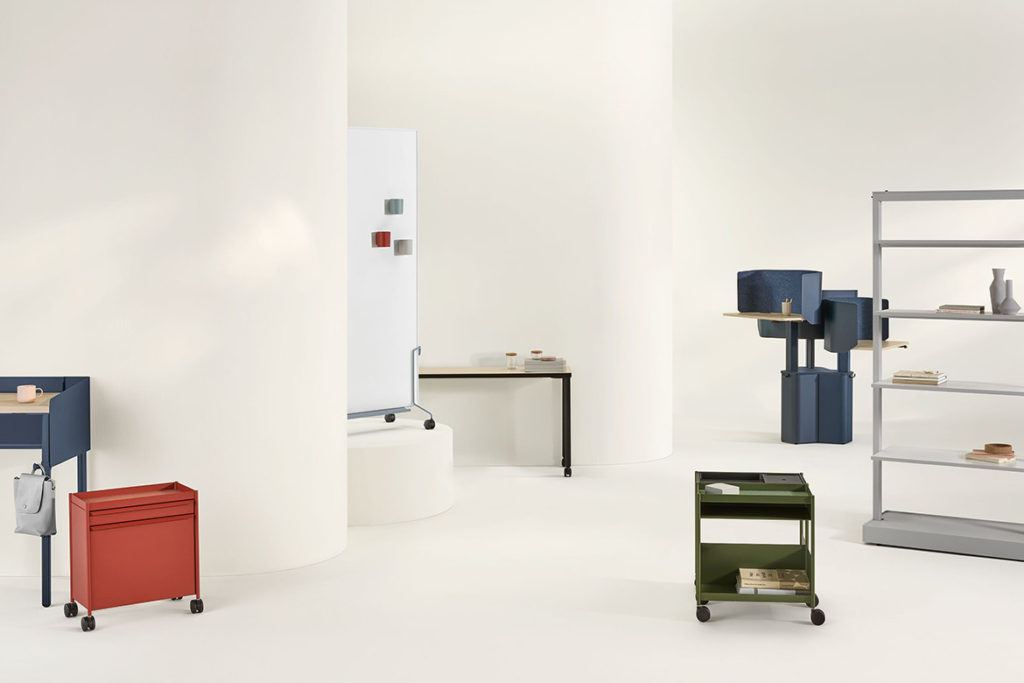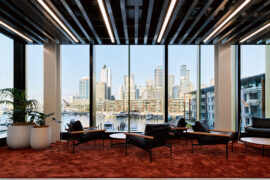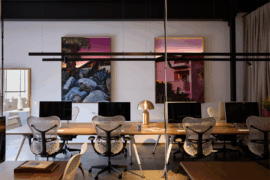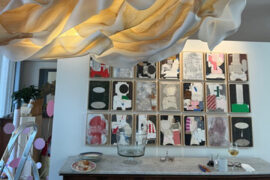From the correlation between the way we learn and our working preferences and the death of ‘corporate starships’, to the all-important sense of temporary ownership in an environment of constant change – in the second part of “The Future of Work” we explore further shifts that define the evolution of the workplace.

Beacons of culture, sources of purpose and crucial drivers of economic and urban revival, commercial workplaces and offices have emerged from the pandemic more multifaceted and indispensable. In fact, with effective work-from-home arrangements still a privilege rather than a widely available solution, the physical workplace is a simple necessity. “Our homes don’t necessarily accommodate the place of work with the place for family,” Andrew Cortese, the Managing Partner at Grimshaw Sydney explains.
This perspective is a much-needed reminder of the egalitarian, universal and inclusive character of the emerging workplace – not too dissimilar from the all-important premise behind educational facilities. But it’s not the only point where these two classifications meet.

The role of the workplace as an enabler for learning from other generations, pedagogies and cultures will become one of its most pertinent signifiers of a commercial place of work moving forward. “Workplaces need to become learning places,” says Andrew. “The knowledge exchange is fundamental.”
Scott Compton, the Principal at Warren And Mahoney Auckland, adds that it’s important to acknowledge that many people need an environment of mentorship and guidance. “The concept of versatility in a workplace is based on creating the right learning environment and ensuring that our leaders are present.”


In a departure from the more traditional perception of learning, Scott also mentions osmosis – a concept he considers crucial to generating a communal learning environment. “It’s being within distance of conversation and things that you just can’t otherwise garner in isolation,” he explains. “It takes many minds to solve a problem, and sometimes – I think – we underestimate the value of just being connected.”

But this innate relationship between learning and work runs deep – and is yet another reason why flexibility within a workplace is so crucial. “Our generations are defined by the way people learn,” Andrew explains. From Gen X who have a greater level of self-independence to the digital-born Gen Z – many of their working preferences will be informed by the way they learnt. The post-pandemic workplace should embrace all facets of the inclusive and diverse workforce through design that nurtures a variety of working habits. It should also ensure a diversified and range of spaces that foster access to leaders and senior staff, as well as people from other backgrounds.
The notion of workplace design nurturing flexibility where working styles and preferences are concerned spreads beyond the office floor – and is also realised by the rise of co-working spaces.
“There have always been distributed networks of work environments governed by the businesses. But now the individual is empowered to choose the environment that is likely to stimulate a different way of approaching a problem,” Scott explains, referring to the increasing popularity of the distributed campus model, which sees organisations rely on networks of buildings spread around neighbourhoods or cities the employees can move between.

Similarly, co-working spaces champion the notion of personal choice, as well as offering individuals and small businesses an opportunity to commune with like-minded people, exchange ideas and extend their network.
Vicki Karavasil, Associate at Elenberg Fraser, explains that these work clubs can accommodate the overflow of companies taking up whole tenancies and enable tenants to co-create public space as part of their rent payment schedule. Plus, the integration of the public realm into the workplace has immense benefits, too. “It gives buildings a greater sense of purpose, encourages more fluidity in the boundaries between places of work, cities and communities – and creates more inclusive and diverse environments,” Andrew contributes.
This concept is also relevant in multi-residential spaces, as it creates an opportunity to swap a study in a flat which wasn’t designed to accommodate work alongside the domestic experience for a purpose-built work facility in the same building. “Perhaps that’s the renewed purpose of the world where we’re less bound to having big corporate starships, Death Stars” muses Scott. “And we take up whole swathes of the city, and become more integrated.”
Related: Key advice for building a fluid workplace, future of work part 1

With the notion of choice, diversification and personal preference one of the key factors defining the way we work, Vicki highlights an element of Herman Miller’s new OE1 Workplace collection she considers particularly relevant.
The flexibility of the new collection designed with mobility and adaptability in mind translates into an immense potential to customise space – whether it’s a temporary organisational requirement or a fleeting personal preference of an individual. “OE1 considers this sense of customization which I think is really important. You can move each element around, and easily arrange individual pieces in different configurations,” Vicki says. She admits that, in her practice, built-in furniture isn’t a go-to choice. “A lot of the furniture specifications centre around loose elements to allow for that flexibility.”

But OE1 takes it further – tapping into the idea of personalisation in a seemingly subtle but incredibly impactful way. “The collection also incorporates elements like the hooks to hang your bag which bring that sense of individual ownership,” she adds. “So even though the piece may not be yours permanently, you can make it so for the time that you’re using it. Those kinds of things impact the way people operate and occupy spaces, and add that extra level of amenities.”
This idea of customisation reflects the more overarching shift in the commercial space. “I think these solutions are very clever and considerate of where the office and commercial design should be headed,” Vicki adds.

Herman Miller’s mindfully curated selection of essential pieces has been designed to bring this intuitive kind of customisation to any work environment. Its versatility is further enhanced by the ease of integration with existing furniture, and the ability to scale up and down – qualities that are exceptionally relevant in any setting that aspires to be responsive in the face of change, and foster an ambience of dynamic fluidity amongst teams and individuals.
On top of that, OE1’s visual expression is pared back, with a distinct lack of the traditional language of office furniture. This minimalist aesthetic, expressed through a broad range of elements, configurations and colours, accentuates OE1’s potential to seamlessly blend with any workplace setting – be it an engaging head office in the middle of a CBD that caters for a variety of working preferences or a thoughtfully integrated work club that brings together a broad spectrum of people from all types of disciplines.
We think you might like this article about key advice for building a fluid workplace with Herman Miller.
INDESIGN is on instagram
Follow @indesignlive
A searchable and comprehensive guide for specifying leading products and their suppliers
Keep up to date with the latest and greatest from our industry BFF's!

A longstanding partnership turns a historic city into a hub for emerging talent

Warren and Mahoney’s design for Beca’s Auckland headquarters turns the mechanics of engineering into poetry, rethinking how workplace design can reveal its own systems.

With a minimalist aesthetic and an inventive approach to product, ZETR is challenging the way electrical accessories are designed, made and experienced.

MillerKnoll reimagines the convention of dinner table interactions by plating up a future-forward menu of sustainable design conversation starters as part of the inspiring “Conversations for a Better World” event series.
The internet never sleeps! Here's the stuff you might have missed

Held in a private Melbourne residence, Fletcher Arts’ annual exhibition unites over 30 Australian artists and designers in a setting where art meets architecture.

With experience across fashion, styling and interiors, Nicholas Gilbert launches Studio Nicholas with a mission to elevate Australian design on the world stage — and to champion a more rigorous, professional future for the industry.